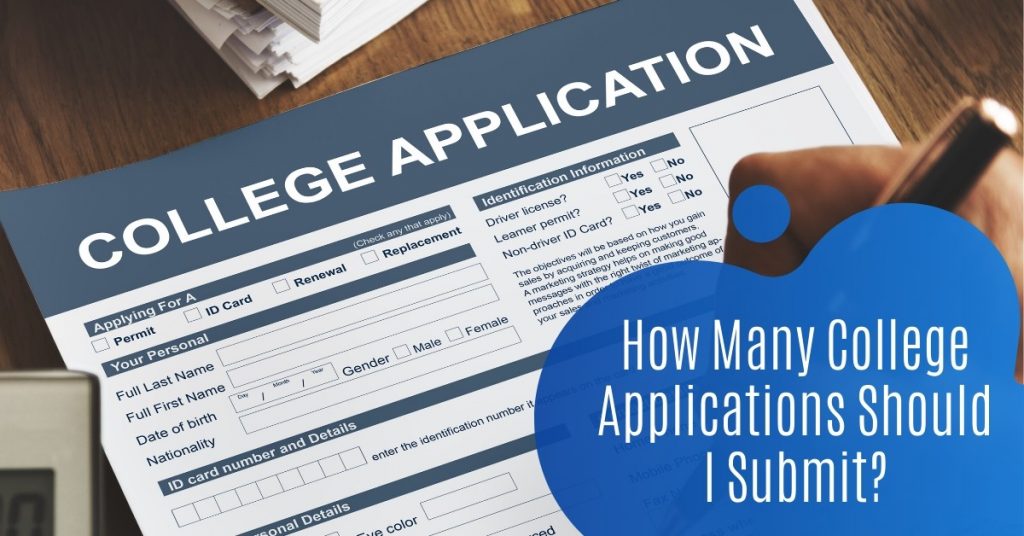Congratulations! High school is almost in your rearview mirror. Not so long ago, you were a nervous freshman, just trying to find the bathroom. Look at you now! A grizzled veteran, full of I-did-it-my-way accomplishments.
- Impressive GPA? Check!
- Target SAT® or ACT® score? Check!
- Extracurricular activities? Check!
- Awkward yearbook picture? Embarrassing prom story? Protractor you’ll never use again? Check! Check! Check!
Now, with your high school checklist nearly complete, it’s time to start filling out those college applications. But the question is this: How many college applications should you submit?
Well, the answer depends on how you answer a few other questions. I’ll walk you through four of them one by one (Don’t worry. You won’t need a protractor to answer any of these questions.)
1. How Much Time Do You Have?
Filling out college applications is a time-consuming process and shouldn’t be rushed. Many students use the Common Application, which is an acceptable practice, but your answers on a college application should always be crafted to demonstrate a knowledge of the particular school to which you are applying.
Colleges and universities will use supplemental, school-specific questions to weed out applicants who are not invested in their particular school.
- Why do you want to attend Fill-In-The-Blank University?
- What do you know about FITB’s history and academic offerings?
- How would you contribute to the student body?
Displaying the demonstrated interest that admissions officers value takes time and attention to detail on each application you submit.
The number of applications you submit depends on the time you are willing to invest in the application process. Don’t try to “mass apply.” Take the time to thoroughly research the school, plan a visit (if you haven’t visited already), and thoughtfully complete each application.
2. How Much Are You Willing to Spend?
Applying to colleges comes at a cost. Fees are generally $50–$75 per application (though low-income families can apply for waivers).
In addition to the application cost, there is a fee for each SAT or ACT score report you send to a college or university. (Once again, low-income families can apply for waivers.)
Note: For both the SAT and ACT, you are given four free score reports when you register. At any time between registration and test day (and for a limited number of days after you take your test), you can choose to send these free score reports to four colleges of your choice. However, you will not have seen your test results yet, so you won’t know if you hit your target test score.
Due to the cost of the application process, consider carefully how many applications you want to send out.
3. What Kind of College or University Do You Want to Attend?
We all have unique goals, specific tastes, and different plans in life. Some kids want to play sports, others want to join clubs. Some people like ice cream (*drooling*), others don’t care for sweets at all.
The same is true when it comes to our college goals. We’re all unique, specific, different. Your own individual college aspirations will dictate how many applications you should submit.
- If you are only interested in attending a top college or university, you should plan to fill out a lot of applications. These schools are highly selective and acceptance rates are very low; therefore, it is wise to send out many applications.
- If you’re open to other colleges or universities, you won’t need to fill out as many applications. Less selective schools have higher acceptance rates, improving your chances for admissions, especially if you have a high SAT or ACT score.
- If you’re staying close to home, you obviously won’t need to send out an enormous amount of applications. Applying to 4 or 5 local institutions that work for your course of study and commuting needs should do the trick.
4. What’s the bottom line?
The best practice for your college application process is to break down your search into 3 categories:
- Safety schools
- Target schools
- Reach schools
Safety schools are schools where your college readiness exam scores place you into the top 25% of the students they admit. You’re highly likely to be accepted at one of your safety schools.
Target schools are schools where your college readiness exam scores place you in the middle of the pack when it comes to the students they accept. You have a reasonable chance of being accepted at one of your target schools.
Reach schools (or “dream schools”) are long shots. These are schools where your college readiness exam scores place you in the bottom 25% of the students they admit. However, there may be other things about your application that gives you an advantage, so apply to a few reach schools just in case.
Diversify your applications between safety schools, target schools, and reach schools. A solid goal would be 2-4 applications to safety schools, 4-6 applications to target schools, and 2-4 applications to reach schools.
If you are preparing to take the ACT or SAT, UWorld can help you succeed. That dream school requires a dream score, and we help make students’ dreams come true. Our industry-leading test prep solutions will have you as ready on test day as you can possibly be. Click here to see how we can help you ace the test.




